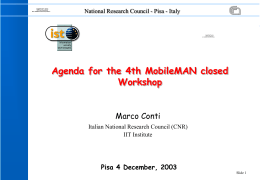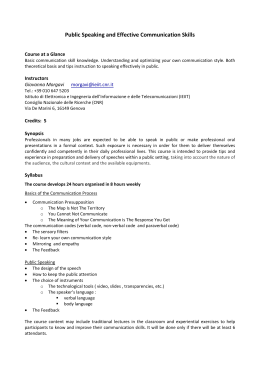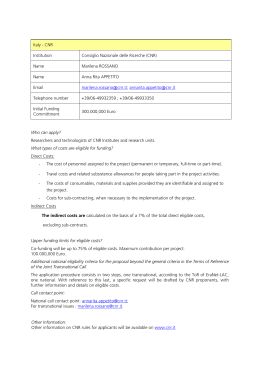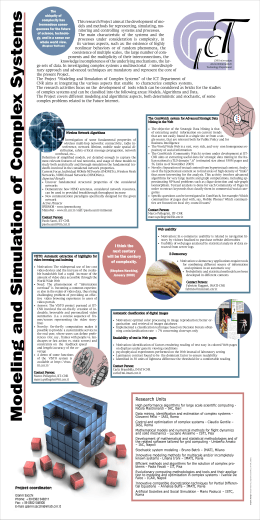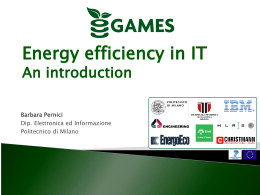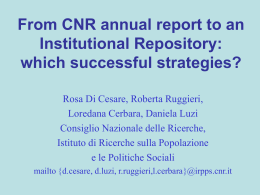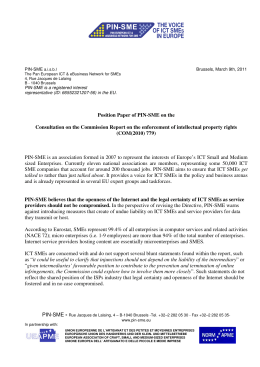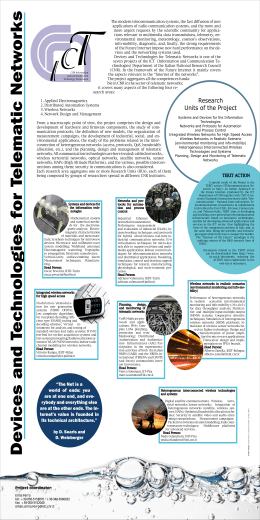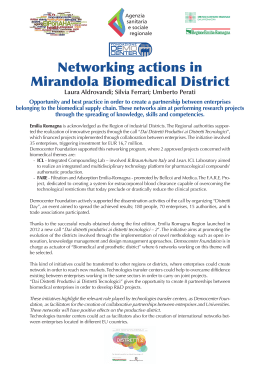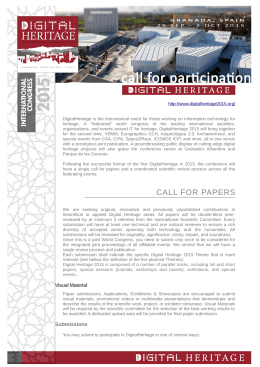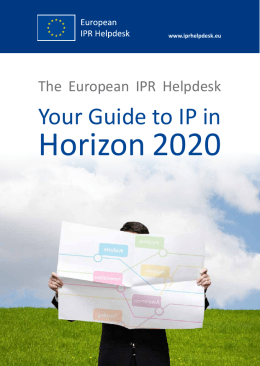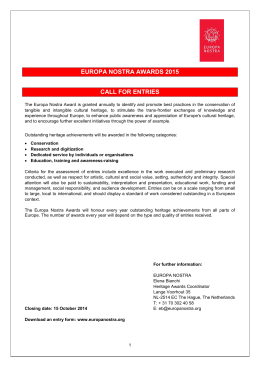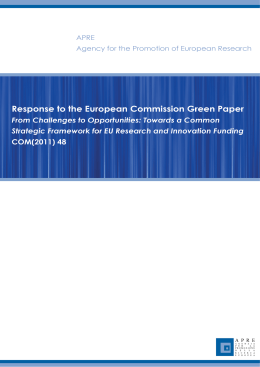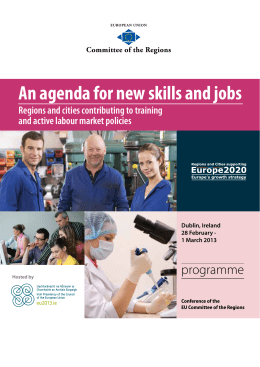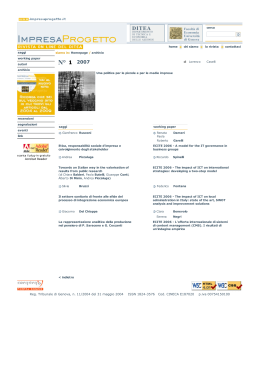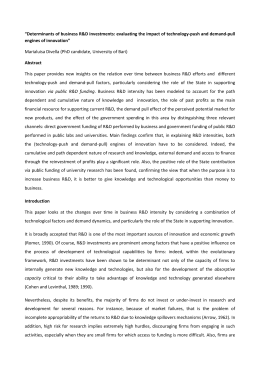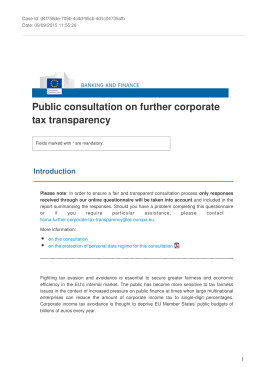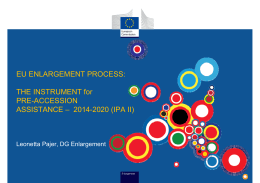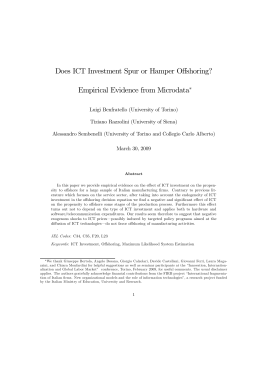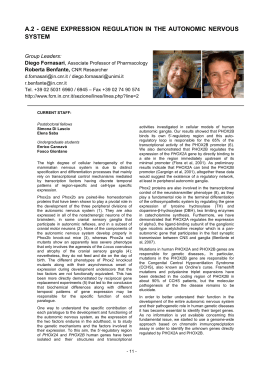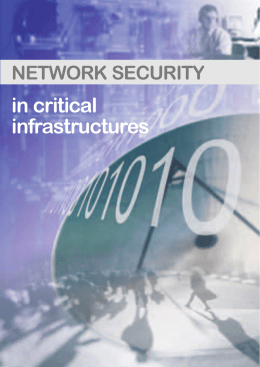The Role of CNR and the New Frontier of Innovation Prof. Luigi Nicolais Sao Luis – July 23, 2012 1 Main Processes of Transformation Industrial System Brain Powered Man Powered Political System Devolved “Light” State One Centralised State Academic System 2 Self - Referential System Open System Transitions Acceleration of transformation Globalisation of economic systems and production Multi-ethnic social environment, glocal as new identity Science and Technology pushing economy Small and Medium Enterprises moving from subcontractors to technological partners Modernity is the synthesis of a global complexity 3 New Challenges To maintain competitiveness and leadership in local production systems by investing in immaterial factors and quality level with a low risk of imitation To connect enterprises and know–how experts on common platforms or interfaces, supported and oriented by the public sector onto specific areas of strategic interest To develop a knowledge – based Society 4 Competing on the global market In a global market the creation of knowledge and innovation are the prerequisites for growth and economic development. To increase knowledge is therefore the necessary condition for innovation. People and infrastructures must be involved so that the capability of transforming knowledge into innovation can be increased and innovation can be transferred into new products. 5 Distribution of R&I Personnel in Italy 120000 100000 80000 60000 40000 20000 0 6 Other employees Researchers Scimago Istitution Ranking 2011 7 CNR History • Established in 1923 • For a long time, CNR has acted as Advisor to the Government in matters of research and as a Funding Agency for University research grants • Since 1989 CNR is mainly a Research Performing Organization 8 Mission To perform research in its own labs To promote innovation and competitiveness in the industrial and social systems To promote the internationalization of research To provide technologies and solutions to emerging public and private needs To advise Government and other public bodies To contribute to the training of human resources 9 Capabilities Full range of scientific areas, except Particle Physics, Space and Astronomy/Astrophysics Premises widespread over the country 8500 full time employees of which 6000 researchers 2000 junior scientists completing their training One Billion annual budget Diffused cooperation with Universities and other research bodies on national and international basis 10 CNR Budget Institutional funds M€ 647 Competitive grant funding M€ 361 Grants from State Dept.s High Tech. Services M€ 71 M€ 56 M€ 190 Regions and Local Authorities M€ 44 EU and International Orgs. CNR FINANCIAL RESOURCES 2011 11 Scientific Network − 7 Macro-Areas (Departments): − − − − − − − * Earth system Sciences - Environmental Technologies * Bio-Agrifood Sciences * Biomedical Sciences * Chemistry - Materials Technologies * Physical Sciences - Technologies of the Matter * Engineering - ICT - Energy and Transport Technologies * Human and Social Sciences - Cultural Heritage − 105 Research Institutes performing research activities and developing capabilities − 20 Research Centres 12 Friuli V. Giulia 1 Lombardy 12 Piedmont 4 Veneto 6 Liguria 4 Emilia Romagna 6 Tuscany 17 Umbria 2 Lazio 23 Abruzzo 1 Puglia 6 Sardinia 3 Basilicata 1 Calabria 3 Campania 18 Sicily 4 Meeting CNPq Brazil 13 Department of Earth System Science and Environmental Technologies Climate research: - Experimental - Modelling - Climate reconstruction - Impact studies 14 Oceanographic infrastructures Urania 15 Italian scientific base in Antarctica 16 EvK2 – Everest project 17 Department of Biomedical Sciences Personalized Medicine Bioinformatics Regenerative Medicine 18 Department of Biomedical Sciences Ageing Drug Discovery Neuroscience Clinical Diagnostics 19 Department of Chemical Sciences and Materials Technologies “Design of new molecules with biochemical properties“ Main research activities: New molecules with predetermined Biochemical Properties; Innovative processes within the industrial medical and Pharmaceutical biotechnology BIO 20 Department of Chemical Sciences and Materials Technologies “Nano-structured polymeric Systems and membranes“ Main research activities: Development of macro-molecular system; Development of multi-functional structures. Composite Materials – Biomaterials – Tissue Engineering MATERIALS 21 Department of Physical Sciences and Technologies of Matter Science and technology of matter from fundamental investigations to applied research 22 New sensors and devices Lasers and photonics Quantum science and technology Soft matter Nano science and technology Instruments and infrastructures Department for: “Engineering, ICT, and technologies for Energy and Transportation” ENERGY Energy Saving Combustion Renewable Energy Nuclear Fusion Diagnostics Biofuels Fuel Cells Buildings Photovoltaic Systems Confronto tra micro - e nanofluidi 23 Reattore tubolare per studi di combustione dolce Department for: “Engineering, ICT, and technologies for Energy and Transportation” INTELLIGENT FACTORY Automation Robotics Engines Manufacturing Industrial Processes Processi produttivi Robotics Wood Textile 24 Department for: “Engineering, ICT, and technologies for Energy and Transportation” Information and Communication Technology FUTURE INTERNET DATA MINING ONTOLOGIES SEMANTIC WEB GRID/CLOUD COMPUTING MULTIMODAL, MULTIDIMENTIONAL CONTENT MULTIDIMENSIONAL MEDIA SECURITY BIOINFORMATICS COMPLEX SYSTEMS MODELING 25 Department of Human Sciences and Cultural Heritage ITALK Integration and Transfer of Action and Language Knowledge in Robots The project objectives: the development of new theoretical insights, models and scientific explanations of the integration of action, social and linguistic skills to bootstrap cognitive development. new interdisciplinary sets of methods for analysing the interaction of language. engineering principles and approaches for the design of robots with behavioural, cognitive, social and linguistic skills. 26 Department of Human Sciences and Cultural Heritage FIELDS OF ACTIONS: INTEGRATED APPROACH OF CULTURAL HERITAGE Knowledge Diagnostic Conservation Restoration Monitoring Valorisation Use Governance 27 The new strategic vision of CNR on the European and International stage Further development of interactions with international scientific communities (Science Europe, Global Research Council, ICS…) Strenghtening the role of CNR in EU Structured participation in European Technological Alliances and Platforms Involvement in the major international debates on scientific and strategic policy: Open Access, Research Integrity, Peer Review, Research Careers, Research Infrastructures, Ex-post evaluation, … 28 Programming Innovation Strengthening and developing creative infrastructure Reducing the gap between academic and industrial research, applied research and innovation development in the enterprises Encouraging a policy of public investment on projects jointly carried out by industrial and academic research teams Making public administration more competitive 29 TECHNOLOGICAL DISTRICTS are born and developed under the drive of 4 very recognizable factors : public insititutions commitment, the presence of talents, the participation of innovative enterprises and of private investors. Public Institutions Talents Geographical concentration of people, enterprises and institutions which together participate to a high – level technological industrial area. Innovation Enterprises 30 Private Investors Dynamic Evolution Administration Communities Technological District Virtual Network Science and Technology Parks Liaison Office 31 Centre of Competence ITALY: TECHNOLOGICAL DISTRICTS • Biotechnologies • ICT • Advanced Materials •Agrifood Industry •Environmental Technologies and Renewable Energy •Alpine Technologies source: MIUR 29 already active 5 Launching • Molecular Biomedicine •Shipbuilding •Torino Wireless •Nanotechnologies • Smart Integrated Systems • Marine Technologies •High Technology and Advanced Mechanics •ICT & Security •Quality of Life, Innovation and Security •Special Metallurgical Materials • Aerospace •Biosciences •New Technologies for Cultural Heritage •Biomedicine and Health Technologies 32 • Micro and Nano Systems • Commercial Navigation and Yatching • Biocompatible and Agro-Bio Fishing •Petrochemical Energy and Environment •Innovation , Safety and Food Quality •Polymeric and Composite Materials and Structures •Agro-industrial Innovation • High-tech • Food Safety • Mechatronics • Energy •Innovative Technologies for Hydrogeological and Seismic Risk Management •Technologies applied to Logistics • Cultural Heritage Creating Networks among the Districts Within the framework of agglomeration, it is crucial that all districts create synergies on common projects. The main goal is that of increasing the visibility and the role played by districts on national and international level. The districts must be the main actors in the process of transformation of our national production model. 33 THE NEW FRAMEWORK PROGRAM: HORIZON 2020 3 Priorities 1. Scientific Excellence 2. Industrial Competitiveness 3. Societal Challenges 34 HORIZON 2020 PRIORITY n. 1: Scientific Excellence Instruments : ERC (European Research Council) Marie Curie Actions FET (Future Emerging Technologies) Research Infrastructures 35 HORIZON 2020 PRIORITY n. 2: European Industrial Competitiveness Instruments: 36 • Key Emerging Technologies (KET) • European Institute of Innovation and Technology (EIIT) • European investment bank (BEI) • Structural Funding… HORIZON 2020 PRIORITY n. 3: Societal Challenges Health, welfare and demographic changes Food security, sustainable agriculture, marine- maritime research and bioeconomy Clean, efficient and safe energy Intelligent, integrated and eco-compatible transport Climate action, resource efficiency and raw materials Inclusive, innovative and secure society 37 Horizon 2020 INTERNATIONAL COOPERATION - International Cooperation is fundamental in facing many of the challenges of Horizon 2020 - Horizon 2020 will be open to Associated Countries, Candidate Countries to Join the EU, and other Countries selected on the basis of appropriate criteria ( relevant competences, long-standing cooperation, geographical and economical links to the EU..) - Appropriate actions to be put into place aiming at a strategic approach to international cooperation ( within the project “Inclusive, innovative and safe society” ) 38 THANK YOU 39
Scarica
